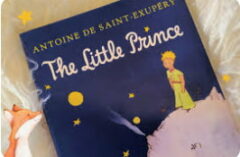Contents
There are some books that continue to wander in your soul even after you close the cover. Antoine de Saint-Exupéry’s unique work, “The Little Prince“, is exactly such a book. Maybe you read it as a child, or maybe you met it when you were an adult. But I’m sure that the story of that little blond-haired boy, his fox and his rose has a special place in a corner of your heart. In defiance of those who say “It’s just a children’s book, my dear“, in this article we will talk about how deep and meaningful The Little Prince actually is and how it whispers different things to each age.
After all, The Sweet Orange book is also a child’s story. This precious work is a critical mirror that looks at the world of adults through the eyes of children. Each character in the story represents an aspect of human nature: arrogance, greed, passion for authority or loneliness… With these aspects, the book is both a warning and a ray of hope for individuals lost in the chaos of modern life. This work, which has become a cult over time, offers a timeless and touching narrative that contains new meanings with each reading.
If you are ready, let’s go on a fabulous journey to the Sahara Desert, and from there to a tiny asteroid, B-612, and remember together why the Little Prince still teaches us so many things.
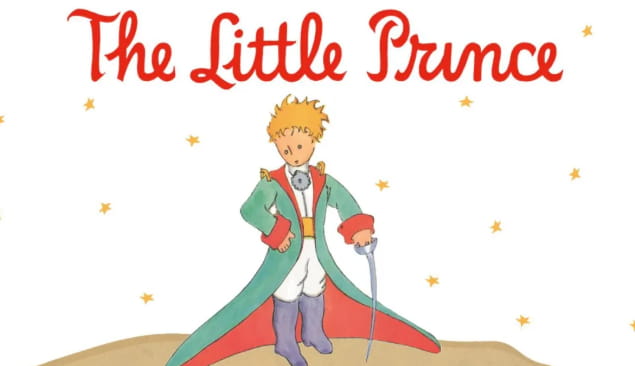
Journey into the Layered World of the Little Prince
At first glance, “The Little Prince” seems like a cute story about the fantastic adventures of a child who left his own small planet and came to Earth. We hear about this encounter from the mouth of a pilot whose plane crashed in the Sahara Desert. While trying to repair his plane, the pilot tries to understand this golden-haired, curious child who suddenly appears in front of him and his strange requests. This friendship, which begins with the request of “Draw me a sheep!“, actually bears deep traces of the author’s own life and his piloting experiences.
The book, together with those naive drawings made by Exupéry, has a warm and sincere atmosphere that immediately embraces the reader. However, beneath this seemingly simple narrative lie subtle criticisms of the complex world of adults and deep philosophical questions about the essence of life.
The Little Prince’s journey begins on his own small planet, Asteroid B-612. There, he has a rose that he loves very much but is just as capricious. He cleans its volcanoes and uproots its baobab shoots. However, as a result of the disagreements he has with his rose, he sets off on a journey to get to know other planets and people. During this journey, he visits interesting planets and meets a different “big” character in each one. Each one actually represents a different obsession, meaninglessness or loneliness of the adult world. These encounters show us how “strange” adults are through the eyes of the Little Prince and force us to question our own priorities.
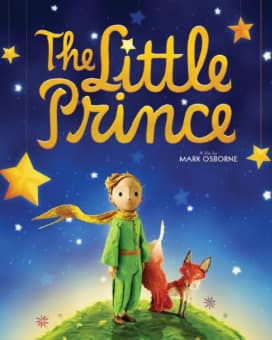
Exupéry’s style of narration is poetic and simple. The sentences are short, the language is understandable, but the meaning behind each word is layered. Using the naive and questioning perspective of children, the author reminds us of the basic truths that adults forget or do not care about. The illustrations in the book also complement this narration. The picture drawn by the pilot of “a boa constrictor that looks like a hat but has actually swallowed an elephant” has become a symbol of how far adults have moved away from their imagination and how superficially they look at events.
These drawings, along with the text, transport the reader to a fairy-tale universe while also reinforcing the deep messages.
The Little Prince Just a Children’s Book?
The Sahara Desert is not just a backdrop for much of the story. The endlessness, silence and loneliness of the desert provide the perfect backdrop for the pilot’s inner journey and the deep bond he establishes with the Little Prince. The desert also symbolizes the difficulties of life, and that hope and meaning can be found even in a place where there is nothing in sight. “What makes the desert beautiful is that it hides a well somewhere,” says the Little Prince. This quote is a hopeful message that there is beauty and meaning even in the difficulties of life.
In conclusion, The Little Prince cannot be classified as just a children’s book. Yes, children can enjoy its fairytale-like narrative, cute characters and fantastic journey. However, for adults, this book offers a deep contemplation on topics such as the meaning of life, friendship, love, loss and responsibility. It is like a multi-layered treasure where you can catch a different detail and derive a different meaning with each reading. For this reason, it has taken its place in the hearts of millions of people for years and has managed to become one of the most read and translated works of world literature.
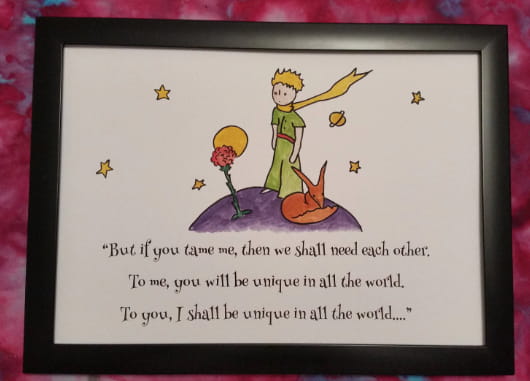
Memorable Characters and Their Meanings
The magic of the Little Prince book comes not only from its captivating story, but also from its unforgettable characters, each carrying deep symbols. Antoine de Saint-Exupéry masterfully handles the different aspects of human nature, the oddities of the adult world, and the basic values of life through these characters. Each character teaches the Little Prince something on his journey, and therefore something to us. Let’s take a closer look at these cute yet meaningful characters and what they symbolize.
- Of course, at the top of the list is the golden-haired Little Prince himself. He is the symbol of innocence, pure curiosity, questioning, and most importantly, seeing with his heart. He comes from his own little planet, Asteroid B-612, and asks endless questions about the universe. What matters to him is not the numbers and external appearances that adults are fixated on, but the essence of things. His beloved rose is a representation of love, beauty, but also arrogance and the need for attention. The Little Prince is responsible for taking care of his rose and protecting it, and this responsibility teaches him what love means. The thorns of your rose are actually a sign of how fragile it is.
- The narrator of the story, the Pilot, actually represents the author himself. He is someone who has lost his imagination and the child inside him in the chaos of the adult world. His encounter with the Little Prince is an awakening for him. The Pilot’s drawing of a “boa constrictor swallowing an elephant” is an iconic symbol that shows how adults lack imagination and are only interested in “the visible.” The Little Prince reminds the Pilot of the values he has forgotten and the things that are truly important. The friendship these two form in the Sahara Desert is one of the warmest and most touching aspects of the book.
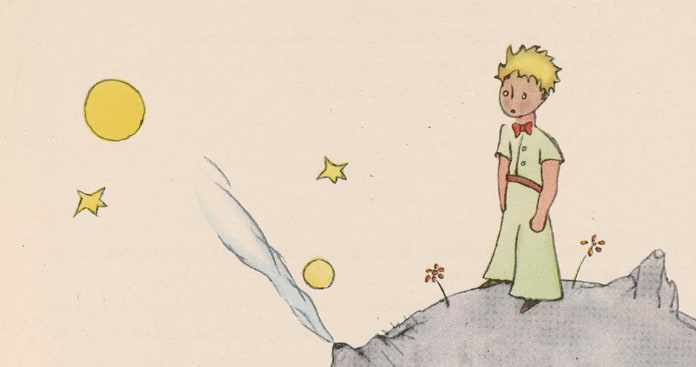
The Fox, the King and the Vain Man
- And of course, the wise Fox! The Fox teaches the Little Prince the concept of “taming” and explains what friendship and bonding mean. “To tame is to form bonds,” he says. When you tame someone, that person becomes special to you and you to them. One of the Fox’s most famous quotes, “A person can only see the truth when he looks with his heart. The essence of truth is invisible to the eye,” summarizes the main philosophy of the book. The Fox teaches the Little Prince that taking responsibility, working hard, and saying goodbye are also parts of life. He is the voice of wisdom and true friendship.
- The characters the Little Prince encounters on the other planets he visits are caricatured versions of the adult world. The King who only wants to give orders, the Self-Conceited Man who expects to be admired, the Drunkard who drinks to forget, the Businessman who thinks he owns the stars and constantly calculates, the Lighthouse Keeper who carries out a meaningless task without questioning, and the Geographer who keeps records without ever leaving his room. Each of them shows us how adults complicate life, how much they value meaningless things, and how lonely they really are. These characters make us question the “big” misconceptions in our own lives.
Life Lessons from the Little Prince: For Grown-ups!
The Little Prince not only offers its reader a delightful story, but also whispers the most basic and valuable lessons of life. Antoine de Saint-Exupéry has packed so much meaning into the pages of this little book that it is a guide for people of all ages. He reminds us of many important truths that adults in particular forget or ignore, with the naive and curious perspective of the Little Prince. Let’s listen to some of the valuable life lessons this little sage has given us.
One of the most important lessons is undoubtedly that the essence of truth cannot be seen with the eye. As the Fox says, “A person can only see the truth when he looks with his heart.” While adults often focus on appearance, numbers, labels and material values, they forget that what really matters are feelings felt with the heart, such as love, friendship and loyalty. The Little Prince reminds us that the true value of things and people is measured by the effort we put into them and the bond we establish with them. The fact that a rose is special among thousands of roses comes from the time and care spent on it.

The importance of friendship and human relationships is also one of the main themes of the book. The concept of “domestication” that the Fox teaches the Little Prince emphasizes the value of establishing a true bond, putting in the effort and taking responsibility. “What separates your rose from others is the time you spend on it,” says the Fox. What makes a relationship special is the mutual effort and the moments shared. In today’s age of fast and superficial relationships, the Little Prince reminds us how precious true bonds are and that they require time and patience.
Lessons to be Learned from The Little Prince
The book also deals strongly with the sense of responsibility. The Little Prince is responsible for his rose because he has “tamed it.” “You are always responsible for what you have tamed. You are responsible for your rose,” says the Fox. This includes not only the responsibility felt towards a flower, but also the responsibilities we have towards the people we love, the relationships we establish, and even the world.
It makes us understand that the choices we make and the bonds we establish have a price and a necessity. Taking responsibility is an important element that gives meaning to our lives.
And finally, the Little Prince teaches us the value of loss, farewells, and memories. When it is time for the Little Prince to return to his home planet, his farewell to the Pilot is sad but meaningful. The fact that he will remember the Little Prince when he looks up at the stars shows that love and memories go beyond physical existence. “What is important cannot be seen with the eye,” says the Little Prince. Even if we lose our loved ones, the memories we share with them and the love we carry in our hearts always remain with us.
This is a bittersweet lesson that gives us hope to cope with the losses that are an inevitable part of life. As you can see, he is not just a curious boy with blond hair; he is also a wise man who whispers the deepest secrets of life to us. This immortal work of Antoine de Saint-Exupéry maintains its freshness even after years and manages to touch our hearts with every reading. Perhaps somewhere inside all of us lies the pure curiosity of the little prince, the wisdom of the fox and the fragile love of the rose.
The important thing is not to forget these values in the complicated and noisy world of adulthood, to know how to see with our heart and to make time for the things that really matter.
If you haven’t read “The Little Prince” yet or read it years ago and forgot, now is the time! To remember that you have a friend who smiles at you every time you look at the stars…
